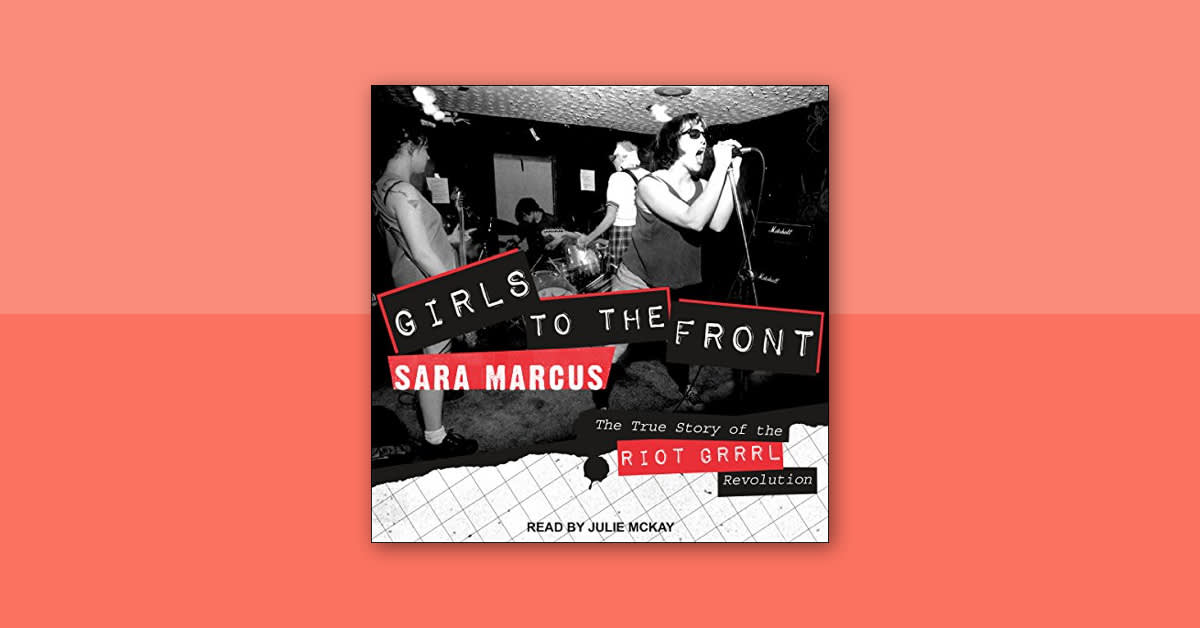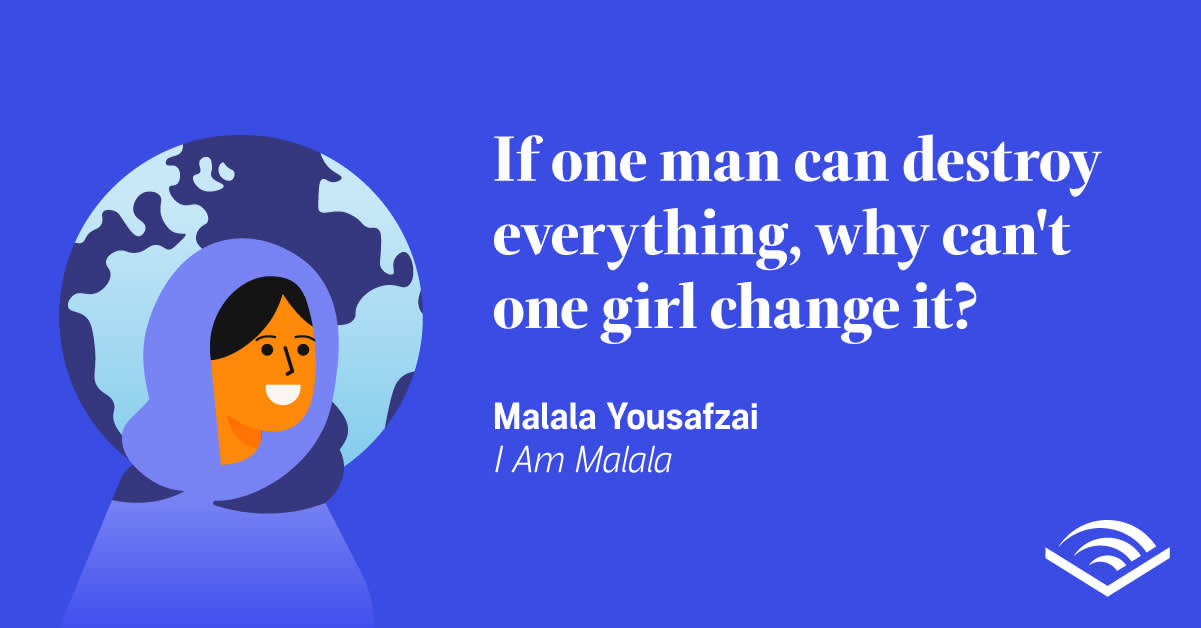In the early 1990s in the hazy fog of the Pacific Northwest, a movement was brewing. In Olympia, the capital of Washington State, women artists began to tackle the pitfalls that plagued their local punk scene—an environment rocked by sexism that was, at best, uncomfortable and, at worst, openly hostile to fans and artists who didn't mirror lineups overwhelmingly dominated by straight white men. After all, punk was supposed to be a rejection of and a rebellion against society's norms and pressures, an anti-corporate, anti-authority subculture meant to offer a safe haven for those who didn't (or wouldn't) conform. So, why were women punks made to feel excluded, looked down upon, or threatened by a hyper-machismo boys club?
Determined to challenge the misogyny they faced both at shows and in the world at large, these women brought their own snarl to a female diminutive—riot grrrl–and began carving out a space that amplified the voice of women and brought female-fronted punk bands to the main stage. Bolstered by the feminist manifestos found in self-published zines by local artists, writers, and activists, the riot grrrl subculture brought punk back to its roots: an expression of dissatisfaction with the status quo with a defiant sound and the vicious, clever lyrics to match. And then again, riot grrrl wasn't just a microgenre of punk music. It was a bona fide revolution—one that offered a sense of community to folks searching for belonging while encouraging activism and sociopolitical awareness beyond the microphone.
The legacy of the movement has been rightly criticized for its often less-than-intersectional lens that saw women of color and trans and nonbinary folks sidelined, with their contributions and involvement too often erased. Despite the flaws of the riot grrrl scene, there's something to be said about the bare bones of the movement, of the power of art and community. When things feel insurmountable, sometimes a few power chords and the chaos of a mosh pit are all it takes to articulate a way out.
So, whether the likes of Bikini Kill, Huggybear, Bratmobile, Babes in Toyland, and L7 hold a prime spot on your playlist or you've yet to hear the drumbeat born from a woman oppressed, these listens offer a fully-fledged history of the riot grrrl revolution, shortcomings and all, from its origins to its enduring power.
Save this list to your Library Collections now.
Founded in Olympia, Washington—the very birthplace of the riot grrrl movement—in 1994, Sleater-Kinney is one of the most iconic women-led rock groups of all time. Alongside powerhouse drummer Janet Weiss (who joined the band in 1996 and parted ways in 2019), co-vocalists and guitarists Corin Tucker and Carrie Brownstein catapulted onto the scene with snarling, viciously tongue-in-cheek lyrics (think the staccato opening lines of “Call the Doctor”: “They want to socialize you! They want to purify you! They want to dignify and analyze and terrorize you!”) and the furious riffs to match. In One More Hour, Tucker (formerly of riot grrrl duo Heavens to Betsy) and Brownstein (who started out with queercore punk trio Excuse 17) reflect on their friendship and career as well as feminism, queer identity, anxiety, and activism, sharing exclusive recordings of tracks like "One Beat" along the way.
In Revenge of the She-Punks, professor, post-punk musician, and industry journalist Vivien Goldman brings an expert perspective to the rise of women in punk in the vivid, visceral style she’s become known for. From its emphasis on protest to the promise of identity explored and defined, punk is a genre with a capacity for spurring both sociopolitical movements and individual moments of belonging, acceptance, and community. Incorporating her own experiences in music with a history of women in punk and a series of enlightening interviews, Goldman gets to the heart of punk’s freeing boldness and the grit that made those who took to the stage true revolutionaries. Featuring glimpses into the scene in cities around the world and reflections on punk heroes the likes of X-Ray Spex dynamo Poly Styrene, this absorbing overview of the intersection of feminism and riotous rock-n-roll is one for the ages.
When you compare the central issues tackled by the riot grrrls of the '90s with those faced by young women today, it’s apparent: Though much has changed, we still have a long way to go. The fight for reproductive freedom, the abolishment of a rigid gender binary, underrepresentation and underestimation, and the constant threat of oft-unreprimanded sexual harassment and assault—these same plights continue to directly affect the kids of Gen Z, and a little rebellion is just as necessary as ever. Jennifer Mathieu imagines an iconoclast for the new generation in her Moxie, a young adult novel that follows Viv Carter (herself the daughter of a riot grrrl) as she takes a stand against sexism in her Texas high school.
For much of rock history, women were largely disregarded, either ignored or repurposed as sex symbols or groupies. But a resistance movement was born in the fiery licks of riot grrrl, a counterculture feminist punk movement that sought to address the issues women faced—including sexism and hypersexualization, rape culture, and domestic violence—and undermine the system entirely. Music and politics writer Sara Marcus paints a vivid picture of the DIY scene in Girls to the Front, with anecdotes of bands like Bikini Kill and Bratmobile who took to the stage to reject, satirize, and totally upend the chauvinistic influence of toxic masculinity and the expectations heaped upon women to be silent, docile, and well-behaved, all the while savagely tearing through sharp-tongued setlists.
Part of riot grrrl's impact was the rejection of the notion that punk was a genre by and for white men—but it’s far from the only moment in music to center the narratives and lived experiences of marginalized communities and discounted artists. The Audible Original podcast Punk in Translation: Latinx Origins takes a closer look at the major impact that Latinx artists had on the punk genre—from sonic influences of Latin music to the defiant attitude attuned to politics and social movements. Featuring talent the likes of Jello Biafra (Dead Kennedys), Clem Burke (Blondie), Victoria Ruiz (Downtown Boys), Kid Congo Powers (The Cramps, Nick Cave and the Bad Seed), Alice Bag (The Bags), and Joan Jett (The Runaways, Joan Jett and the Blackhearts), this listen from journalist (and founder of La Coctelera Music) Nuria Net is a fascinating glimpse into the too-oft disregarded founders of punk, hosted by Tijuana No!’s incomparable Ceci Bastida. And though it follows groups led by all genders in a range of subgenres, any fan of riot grrrl’s commitment to shifting the conversation will find something to love in this boundary-breaking history.
For all the empowerment and forward momentum generated by the riot grrrl revolution, the punk genre was not without its faults. In retrospect, the contributions of musicians of color were often overlooked or subject to erasure, despite their significant impact on the scene. And absent an intersectional lens, it’s worth confronting the notion that it was solely white cis women fronting the movement and instead take a look back at the Black artists who made their mark on punk, while combating the toxicity of racism and exclusion. In this episode of Stuff Mom Never Told You, riot grrrl expert Bridget examines the countering of counterculture headed by Black women seeking that same ferocity of self-expression.
Though the New York City-born, label-defying Lunachicks might not quite fall into the designation of riot grrrl—or any other microgenre, for that matter—their proudly unruly brand of feminist and punk surely merits a kind of recognition all its own. In the delightfully titled Fallopian Rhapsody, The Lunachicks (joined by journalist Jeanne Fury) unearth tales ranging from their start at LaGuardia High School to their time on tour with megastars the likes of No Doubt and The Offspring, alongside every other moment in their over-a-decade long career tearing up the stage. And though the band is a standout in large part because of their wicked sense of humor, their story is full of strife, the pains of addiction and depression, impostor syndrome, and the exhausting misogyny plaguing the industry. But make no mistake—this listen is a pure triumph, a celebration of friendship that cuts through the noise and offers up a truly rollicking (and undeniably badass) ride through the punk scene of the late '80s into the '90s.
It goes without saying that the riot grrrl revolution was intrinsically linked to the emergence of third-wave feminism. This new frontier of feminism saw activists working not to get their footing in the workforce or earn a seat amongst men, as their forerunners had sought to do. Instead, they fought to totally upend a patriarchal, heteronormative system and build something new and inclusive in its place, questioning everything along the way. With the recent introduction of Kimberlé Crenshaw’s pioneering notion of intersectionality and the advocacy of writers and activists like bell hooks, Audre Lorde, and Maxine Hong Kingston, the feminism of the 1990s began to dedicate specialized attention to the crushing, coexisting systems of oppression—sexism compounded by factors of race, class, gender, and sexuality. For a brief overview of activism in the era, this Great Courses lecture led by Jennifer Baumgardner dissects a new dawn of feminism, as brash and bold as it was multifaceted.
Alongside the music that thumped through basements, bars, and music halls came the grassroots zine movement. Inspired by the same do-it-yourself attitude and rejection of the mainstream that came to define the punk genre, creatives found an outlet in the production of zines: self-published magazines featuring original prose and poetry, illustrations, and scrapbook-styling collages, along with cultural manifestos and reflections on issues such as gender, sexuality, and body image. The zines of the 1990s have become a vital source of understanding and giving voice to the attitudes and frustrations of the era, and they have proved to be an important resource for women trying to find their voice and express what was left unsaid. Want to try giving it a go for yourself? Tap into whatever matters most to you and press play on the Unladylike podcast’s guide to history of zines, their impact, and how you can get started on circulating your own.
The forces of capitalism often interfere with genuine progress, making substantial, actionable change more difficult and instead commercializing a movement into little more than a t-shirt slogan. In We Were Feminists Once, Andi Zeisler, cofounder of the feminist indie media org Bitch Media, takes an incisive look at the depoliticized appropriation of the feminist movement and the feel-good but ultimately empty girl power brand that’s been bought and sold time and time again. If you’re looking for a primer on feminist history and a nuanced critique of the buzzwords and shiny mainstream marketing that’s gutted much of the feminist front’s potential, Ziesler’s guide is the listen for you.

















